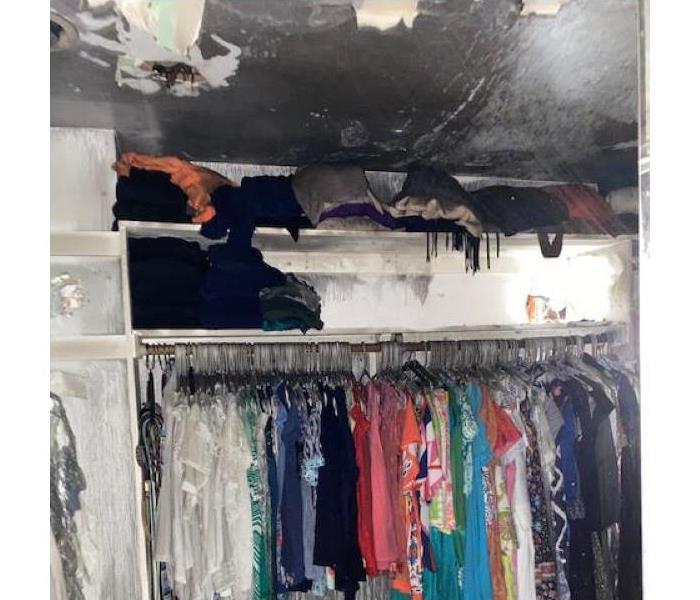What Burned?
7/14/2022 (Permalink)
One of the most important things we need to know in order to properly treat fire damage is what materials burned.
This information will help us determine what kind of smoke damage you have and establish the proper restoration plan. Not all smoke is equal and each different type requires a different method of cleaning. A quick breakdown of the types of smoke residue is:
- Wet Smoke Residue -Wet smoke residue occurs from smoldering fires with low heat. During these fires, synthetic materials such as plastics and rubbers, carpeting, furniture and electronics will have slowly smoldered. They tend to have a pungent odor and leave a sticky residue. During cleaning, wet smoke residue can smear, making cleanup more difficult.
- Dry Smoke Residue – Dry smoke residue occurs during fast burning fires that burn at a high temperature. Natural materials such as paper, leather, natural rubber and wood are present in dry smoke fires. Dry smoke residue is generally dry, powdery, gray in color and does not smear much. Homes that have experienced these fires are easier for our crew to restore.
- Protein Residue – Protein fires are most commonly caused when food burns in a kitchen. Protein residue is essentially invisible and a homeowner may be under a false impression that the damage is minor. However, there is actually soot covering the surfaces. If not properly removed, protein smoke will discolor paints, varnishes, and other finishes on your walls and cabinetry. One major indicator that there is an invisible residue after a kitchen fire is a very strong, obnoxious odor.
The SERVPRO of Southbury/Torrington team treats each fire damage job individually and will determine which course of action to take after arriving at your home. Call us at (203) 267-6262 for a quick response, an evaluation of your home's fire damage and a professional restoration plan.




 24/7 Emergency Service
24/7 Emergency Service